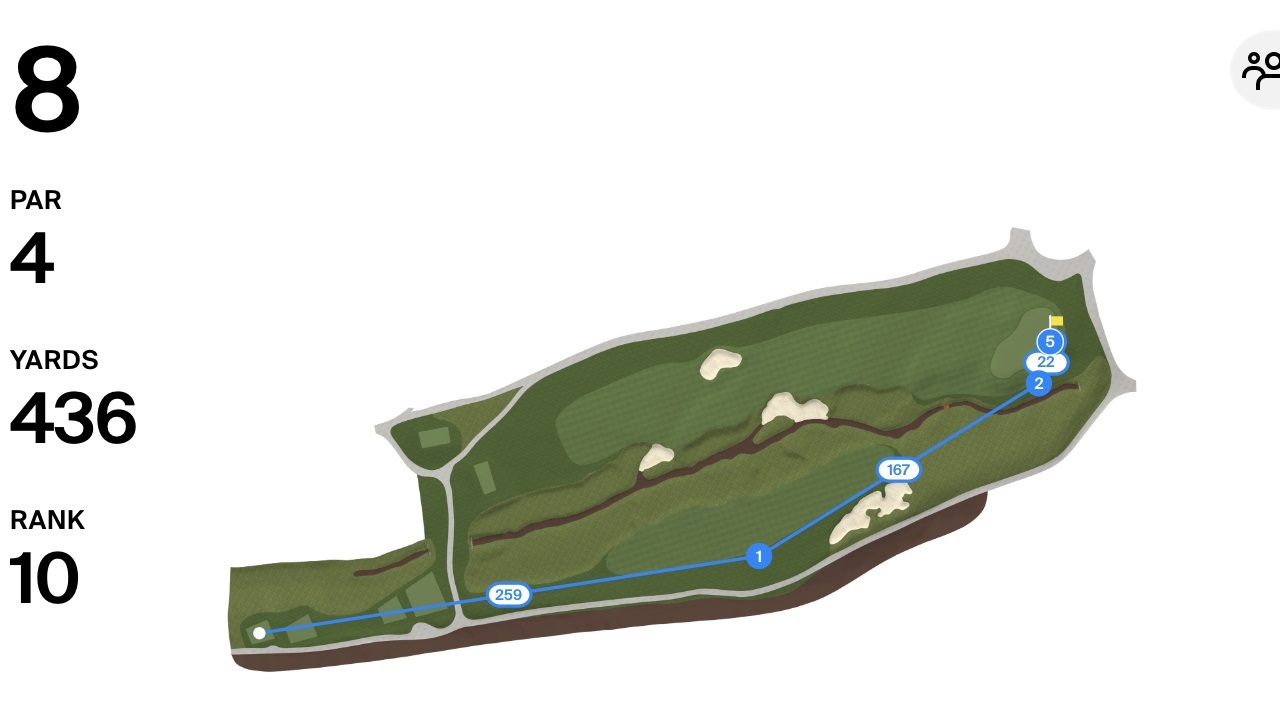I spent Thursday walking with the Cantlay-Spieth-Tom Kim group for most of their round, then joined the Scheffler-Morikawa-Fitzpatrick group for most of theirs. Plus I saw some sporadic shots from a few other groups. Here are my notes from the day:
–Riviera is wonderful. Just getting that out of the way before we get into some criticism later on.
–Turbulence on a leaderboard is a refreshing change of pace. Checking the PGA Tour app knowing that players could have moved in either direction due to the difficulty of the golf course is far more exciting than just checking to see which players have made birdies. There are contrived, distasteful ways to inject scoring variance into a golf tournament. Riviera is brilliant in that it doesn’t need to contrive anything to test the best golfers in the world.
–First-round leader Patrick Cantlay is slow, but the Cantlay criticism might be a little overdone. A lot of PGA Tour players are slow. I’ll give Cantlay credit for often walking to the next tee and getting ready to hit while his playing partners putted out.
–I didn’t pull the stopwatch out but Tom Kim has to be slower than Cantlay. He takes forever. On a positive note, his short game is incredible. He missed eight greens and got up and down eight times. The dude can chip with the best of them.
–Patrick Cantlay and Jordan Spieth seem pretty tight-knit…
–The absurdity of Scottie Scheffler’s ball-striking can’t be overstated. He basically doesn’t miss shots. He hit 12/14 fairways (ranking second) and hit 13/18 greens (also ranking second). He missed eight putts inside 10 feet and finished his first round tied for 10th. Don’t kid yourself: he can win this golf tournament, even despite his putter.
–A par 3 on the PGA Tour where the optimal approach shot is to aim away from the green would be an awesome hole. The fourth at Riviera ain’t it. Bouncing a shot from short right just doesn’t work due in part to the kikuyu grass, and it’s physically painful to watch golf shots on such an amazing design that plays so poorly. The fourth at Riviera is closer to being the worst par 3 on tour than the best, which is a shame because it has the bones to be among the finest.

Unfortunate mowing lines on No. 8 at Riviera (photo: Fried Egg Golf)
–Some of the mowing lines at Riviera are egregious. (Like No. 8, pictured above.) I find the thick strip of rough between the barranca and the runoff area right of the eighth green to be particularly offensive. It just doesn’t make sense. Shots that miss right should repel down the severe drop and into the barranca, a wonderful natural hazard. Instead, a thick strip of rough catches errant shots. Matt Fitzpatrick hit a horrendous approach into No. 8 that was saved by the rough:

Matt Fitzpatrick's route to bogey, aided by rough serving as a bumper around hazards.
–Ultimately, he missed a five-footer for par, but his third shot should’ve been from the barranca, not from a fine lie in the rough. Reminder: adding rough does not always make a golf hole more challenging.
–Multiple things can be true at once about No. 10. Most players seem to hate it, which is fine. If Augusta National were introduced into the professional golf landscape today, players would have full-blown meltdowns, whining about the course until it was removed from the schedule.
–Also: 10 is good. Does it produce some randomness in outcomes? Sure. The green is so severe, and there are so few areas around the green from which you can hit a shot that stays on the putting surface. Tiger Woods hit a few arguably solid shots on that hole today, and he still walked away with bogey. I don’t have a problem with that! Some chaos and randomness is fine. Technology has made it extremely difficult to challenge the modern tour player. It’s fine for a hole to leave players pissed off and scratching their heads.
–No. 10 could be improved, and how to improve it makes for an interesting conversation. But soliciting player feedback to modify the hole would be the most surefire way to ruin it. 10 at Riviera isn’t perfect, but I’m glad it exists.
–Limiting field sizes for signature events is good. Cutlines are good. Earning your way into a signature event should be an achievement. Earning your way to playing on the weekend should be too. I’m excited that big names like Rory McIlroy, Matt Fitzpatrick, Tiger Woods, and Justin Thomas will be battling to play the weekend during Friday’s round. Their rounds would be much less meaningful and intense if they weren’t. Top 50 and ties with a ten-shot rule in effect probably isn’t harsh enough for a 70-person field. But this tournament structure is pretty strong.
–A day removed from Tiger’s press conference, I still can’t get it out of my head that Tiger and Yasir Al-Rumayyan apparently have not spoken with one another.
–Some fans at PGA Tour events are brutally obnoxious, yelling at players with the dumbest, least interesting comments you’ll ever hear. On the whole, though, the majority of spectators are respectful and intelligent. I don’t get many questions from spectators while I’m walking around golf tournaments, but I got two questions today from people who described themselves as relatively new to watching pro golf. They asked me how far it was to carry the bunkers on the eighth hole, then followed up by asking why the bunkers were positioned where they are if most professional golfers can hit right over them. I sighed. I am still waiting for evidence that the supposedly prevalent meatheads who just want to watch golfers bomb drives and rack up a bunch of birdies actually make up a significant percentage of golf fans. And even if there is a large population of fans who don’t care that technology has compromised the board upon which this game is played, is that really the fan we should be catering to? Or should we strive to create the best version of the sport possible, while bringing fans up to speed along the way? If the two fans with whom I spoke are any indication, plenty of people prefer the intelligent version of the game.
This piece originally appeared in the Fried Egg Golf newsletter. Subscribe for free and receive golf news and insight every Monday, Wednesday, and Friday.


 by
by 
